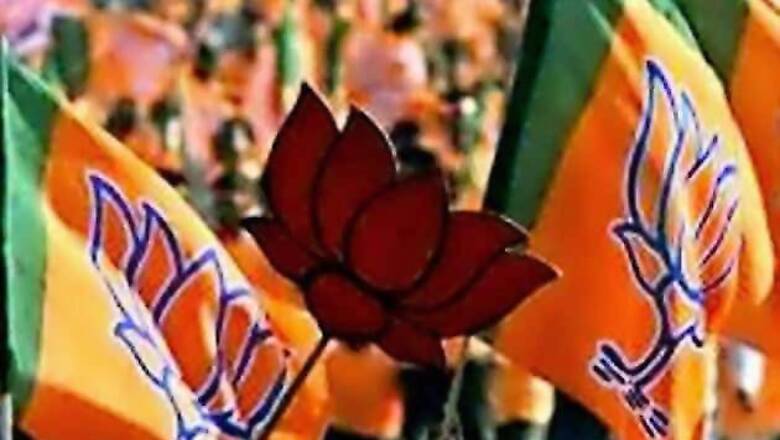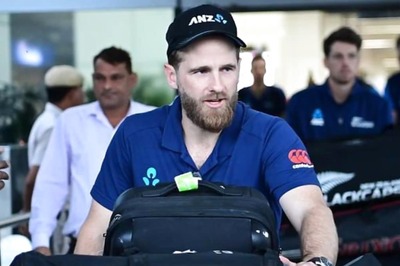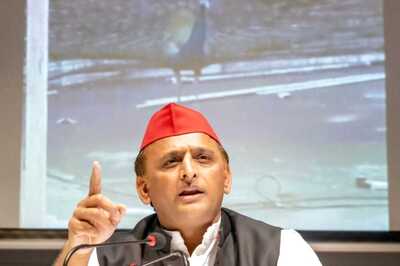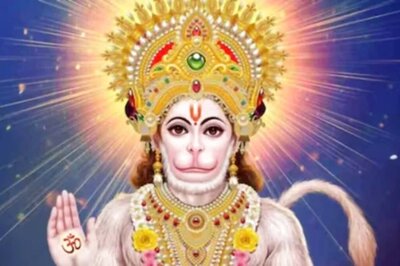
views
New Delhi: Since October-November 2013 India has been in election mode with several states electing new assemblies and sandwiched between them was the grand Lok Sabha election that saw a single party majority for the first time since 1984 when over 65% of the country's population was not even born.
The common thread in the last 17 months has been the stupendous rise of Bharatiya Janata Party which has steamrolled the opposition in all elections except when it came to Delhi. Apart from BJP, the only other political outfit that has some reasons to cheer in the last few months is the new kid on the block - Aam Aadmi Party which has proved to the former's bugbear in Delhi.
The Arvind Kejriwal-led AAP first stopped the BJP from forming government in Delhi in December 2013 and then had a Phoenix-like rise after its mauling in Lok Sabha elections to conquer the national capital in February 2015 elections, decimating both the BJP and an already down-and-out Congress.
While AAP has been able to stop the BJP's juggernaut, other parties have been licking their wounds, unable to find the formula to take on the Prime Minister Narendra Modi-led unit which now has 328 MPs in Parliament and 1061 MLAs in the states, making it the biggest political outfit in India.
But the recent Delhi elections where in spite of deploying the Prime Minister, over 20 Union ministers, 120 MPs and several chief minister the BJP was crushed by Kejriwal's AAP show that the top down approach adopted by the party till now had its limitations.
The message for BJP, which parachuted former IPS officer Kiran Bedi as its CM candidate to tide over the differences within the party, is that a strong, grounded leader with his fingers on the voters pulse backed by a dedicated team can successfully take on and derail its massive election machinery.
Yet the party remains the strongest force in several states where elections are dues in the next couple of years particularly Bihar which is likely to go for poll in October-November 2015 unless the present political crisis in the state forces the Election Commission to conduct the democratic exercise earlier. BJP President Amit Shah's political acumen will be once again put to test in Bihar where the party decimated its rivals in the 2014 Lok Sabha elections.
Even as AAP's massive win and BJP's loss may have given other parties some hopes of putting up a good fight, the former is basically a force to reckon with in only Delhi and Punjab. BJP is very strong in North, Central and West India, and is also expanding in regions where it used to have a nominal presence till now by rapidly replacing the virtually leaderless Congress.
Here's a look at how the BJP, Congress and other regional parties stand:-
BJP:
The party is in power at the Centre along with eight states on its own and in alliance with other parties in two other which gives it a large resource pool, both in terms of manpower and financial clout.
Major states like Gujarat, Rajasthan, Maharashtra (in alliance with Shiv Sena), Madhya Pradesh, Chhattisgarh, Jharkhand, Andhra Pradesh (in alliance with Telugu Desam Party) and Punjab (in alliance with Shiromani Akali Dal) are under BJP rule. Haryana and Goa are also with the BJP.
It has a well defined leadership with the Narendra Modi-Amit Shah duo calling the shots. Their decisions are never questioned and together they have been able to take the BJP to greater highest with the exception of Delhi.
Modi's image of a strong-willed and development oriented leader has been BJP's biggest USP in the last couple of years, so much so that the party has fought states elections except Delhi on his name. Coupled with Amit Shah's tactical brilliance, BJP has been able to come to power on its own in states like Haryana where it hardly had any presence till about five years back.
High morale of BJP leaders and workers following a series of electoral wins has been dented by the Delhi loss, yet in many states they are gung-ho because of division with the opposition ranks. A cadre based party with a large number of affiliate organisations all of whom come together during elections and work for the common cause, BJP leadership would like to believe that the Delhi mauling was just a small blip in its otherwise excellent electoral performance in the last two years.
Congress:
Lurching from one humiliation to another, the Congress is facing the ignominy of soon becoming a regional party or may be even worse. With the weak, lacklustre and indecisive leadership of Sonia Gandhi and Rahul coming increasingly under fire, it is only getting tougher for the party. Its central as well as state units are in disarray and many leaders are looking for greener pastures.
While a coterie surrounding Sonia and Rahul has ensured that the duo doesn't come out to take responsibility for electoral routs, there has been a clamour by a section to inject new ideas, strategies, vision and leadership to ensure the party's survival in a rapidly changing India where the Gandhi surname is no longer an asset. The party has just 112 MPs in Parliament with only 44 in the LoK Sabha making it ineligible even for the Leader of Opposition post.
Except Karnataka, Assam and Kerala, where the party is in power in an alliance, the Congress is the ruling party in only smaller states like Arunachal Pradesh, Himachal Pradesh, Manipur, Meghalaya, Mizoram and Uttarakhand which does give much political muscle to the party in the national arena.
Congress's implosion has been directly proportional to BJP's rise. Modi and his team have been very quick to take over the space left by the Congress and now BJP's chief rivals are only regional parties.
Regional parties:
The first wave of regional parties in the 1960s rose on anti-Congressism which was the glue for opposition forces to rally around till the mid 1990s. Almost all these regional parties have been basically personality driven or family-led outfits.
A large number of them are now very powerful in their states with some of winning assembly elections on a regular basis. Following BJP's aggressive stand and Lok Sabha win, these parties are now busy protecting their fiefdom.
Parties like the DMK, AIADMK, TDP, Telangana Rashtra Samithi, YSR Congress, Shiv Sena, Shiromani Akali Dal, National Conference, Peoples Democratic Party, Bahujan Samaj Party, Samajwadi Party, Janata Dal United, Rashtriya Janata Dal, Jharkhand Mukti Morcha, Trinamool Congress, Biju Janata Dal, Sikkim Democratic Front, Mizo National Front, Asom Gana Parishad, Naga People's Front, Manipur People's Party are some of the bigger regional outfits who have given national parties a run for their money.
Their importance increased in the 1990s when coalition governments became the norm at the Centre which continued till the 2009 LoK Sabha elections. But Modi's BJP flattened most of them in the 2014 elections, raising question marks over their future.
Yet many of these regional parties are led by charismatic leaders who remain the biggest vote catcher in their respective states. AIADMK, TRS, BJD and TMC are some of the outfits who managed to stop the BJP victory march in their states.
Bihar is the next state where Assembly elections are due later in 2015 and the state has seen two big leaders and friend-turned-foe-turned-friend - Nitish Kumar of JDU and Lalu Prasad of RJD - joining hands to stop the BJP.
AAP's success in Delhi has renewed efforts by regional parties to close ranks in their bid to save their turf from the BJP surge and Bihar is going to be its first biggest test. The JDU, RJD, Congress and NCP had come together in Bihar to defeat the BJP in bypolls for 10 Assembly seats a few weeks after the 2014 Lok Sabha elections which has given them the confidence of repeating the feat in Assembly elections.
But the recent upheaval in the JDU has come as a short in the arm for the BJP which just like its Delhi unit has not been a united force in Bihar but is confident of riding on the Modi wave to power for the first time on its own in the state.
Similarly TMC chief Mamata Banerjee, BJD's Naveen Patnaik, AIADMK supremo J Jayalalithaa, even though she has been convicted and debarred from contesting elections just like RJD chief Lalu Prasad, remain the biggest names in their respective states.
Kejriwal's AAP is on a high after the Delhi win but apart from Punjab where the party won four Lok Sabha seats, it does not have an organisation in most of the states. Even the top leadership has made it clear that the party will not contest any state election apart from Punjab in the next couple of years instead concentrate on building up the party.


















Comments
0 comment